 |
 |
 |
| |
Antifibrotic activity of dual CCR5/CCR2 antagonist cenicriviroc in a mouse model of renal fibrosis
|
| |
| |
Reported by Jules Levin
Intl AIDS Conference, Melbourne
Graeme Moyle1, Toni L. Richards2, Craig F. Plato2, Helen Jenkins3, Grushenka HI. Wolfgang4, Eric Lefebvre3
1Chelsea and Westminster Hospital, London, UK; 2Plato BioPharma, Inc., Westminster, CO, USA; 3Tobira Therapeutics, Inc., South San Francisco, CA, USA; 4Kailua-Kona, HI, USA


---------------------------
Program abstract
Background: Cenicriviroc (CVC), a novel, oral, once-daily, dual CCR5/CCR2 antagonist, has completed Phase 2b HIV development (NCT01338883) with a favorable safety profile (555 subjects treated with ≥one dose, including 115 HIV-1-infected adults treated with CVC over a 48-week duration). Recently, CVC demonstrated significant antifibrotic activity in a mouse model of diet-induced, non-alcoholic steatohepatitis (NASH) and a rat model of thioacetamide-induced fibrosis. Here, we evaluated CVC in a well-established mouse model of renal fibrosis induced by unilateral ureter occlusion (UUO).
Methods: Male CD-1 mice underwent a permanent UUO procedure at Day 0. Animals received CVC at doses of 0 (vehicle control; n=9), 7 (low dose; n=9) or 20 (high dose; n=9) mg/kg/day from Days 0 to 5, via twice-daily oral gavage. Another group (n=9) received the anti-TGF-ß antibody 1D11 (positive control) at 3mg/kg/day from Days -1 to 4, injected once daily intra-peritoneally. Animals were sacrificed at Day 5. Endpoints included kidney and body weights, mRNA expression of pro-fibrotic and inflammatory biomarkers, and histologic evaluation of obstructed kidney fibrosis via quantitative image analysis of picrosirius red staining.
Results: CVC had no effect (low dose) or modestly decreased (high dose) body weight, and did not affect obstructed kidney weight. CVC decreased levels of obstructed renal cortical mRNA (collagen 1a1 and 3a1; TGF-ß; fibronectin-1) relative to vehicle control, but this did not reach statistical significance. 1D11 significantly decreased the same parameters relative to vehicle control (p<0.05). Renal cortical fibrosis, expressed as collagen volume fraction, was increased in UUO obstructed kidneys (p<0.05; 11.4±1.0-fold). When a single outlier was removed (value >2SD; 1 animal in CVC high-dose group), CVC (low and high dose) and 1D11 attenuated UUO-induced increases in renal cortical fibrosis relative to vehicle control (p<0.05; 28.6±8.8%, 31.8±6.8% and 50.3±7.3% reduction, respectively).
Conclusions: CVC demonstrated significant antifibrotic effects in a mouse model of renal fibrosis. Together with improvements in liver fibrosis observed in animal models and extensive clinical safety data, these findings support further evaluation of CVC in fibrotic diseases; proof-of-concept clinical studies are being designed. Planned Phase 3 HIV trials will evaluate CVC/3TC as a novel backbone versus TDF/FTC, co-administered with preferred third agents.
-------------------
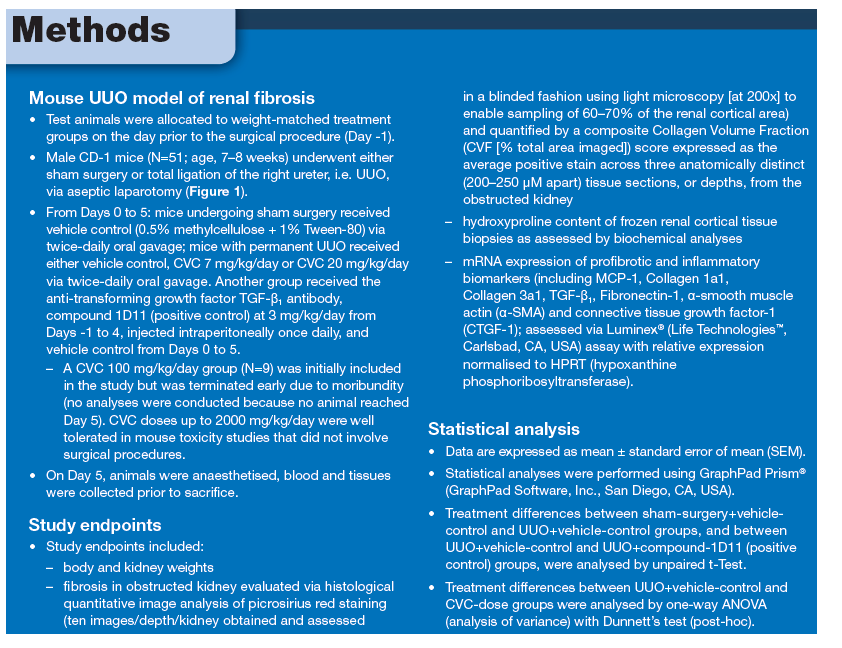
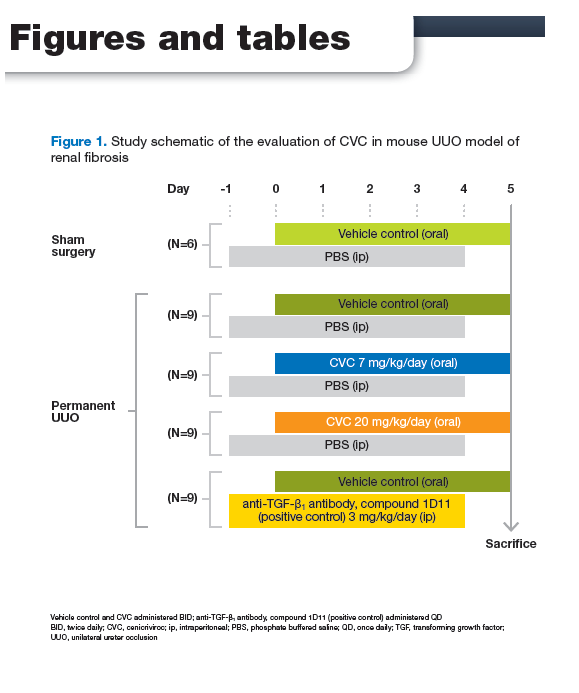
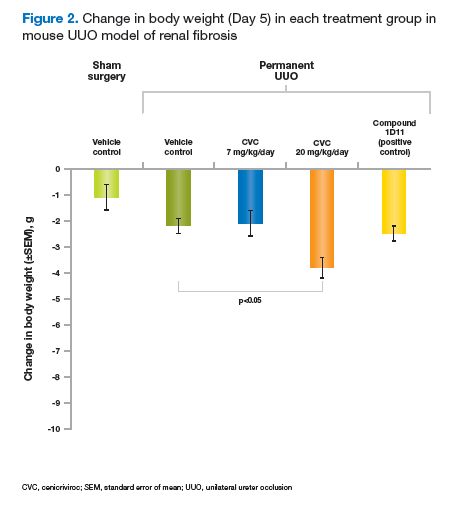
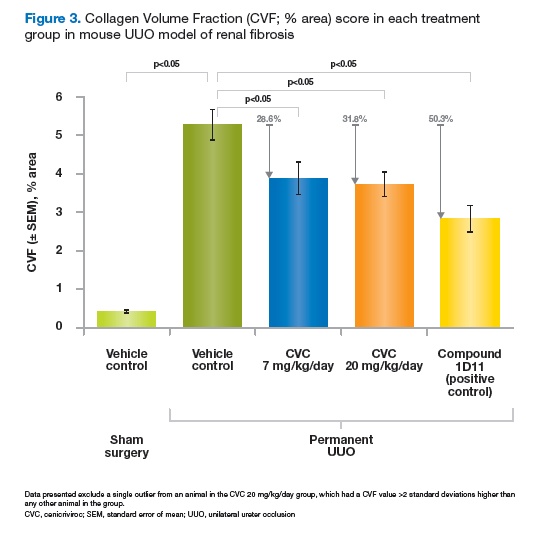
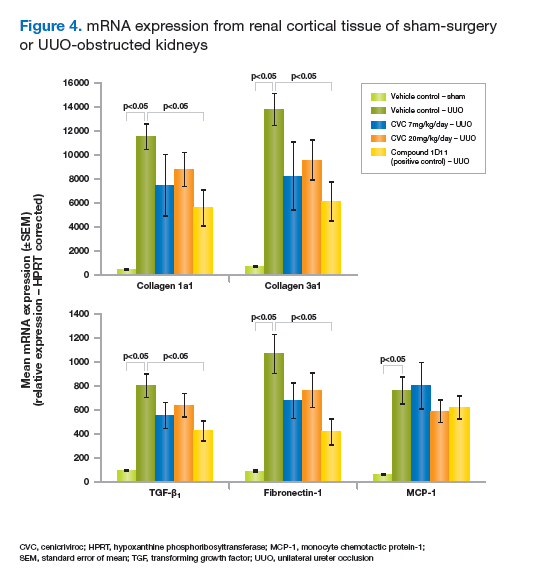
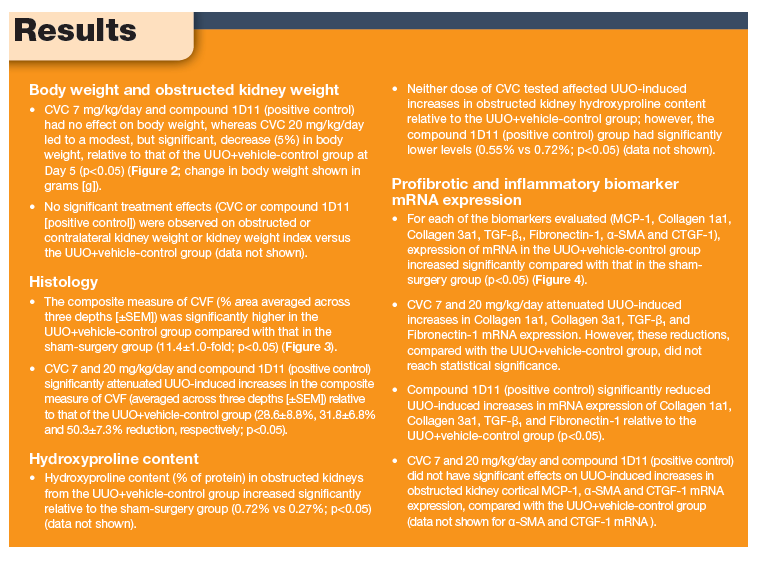
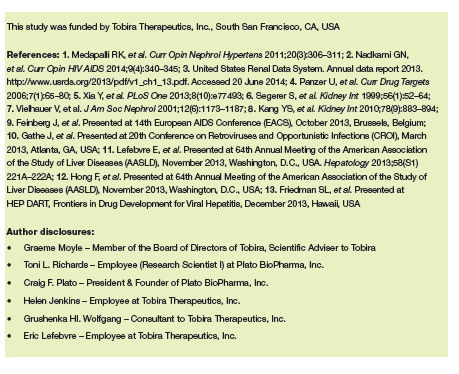
|
| |
|
 |
 |
|
|